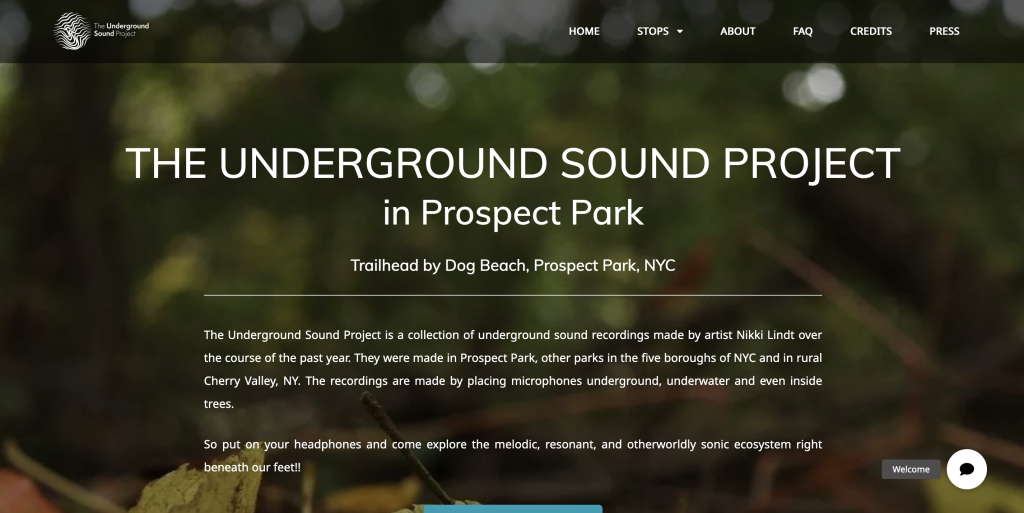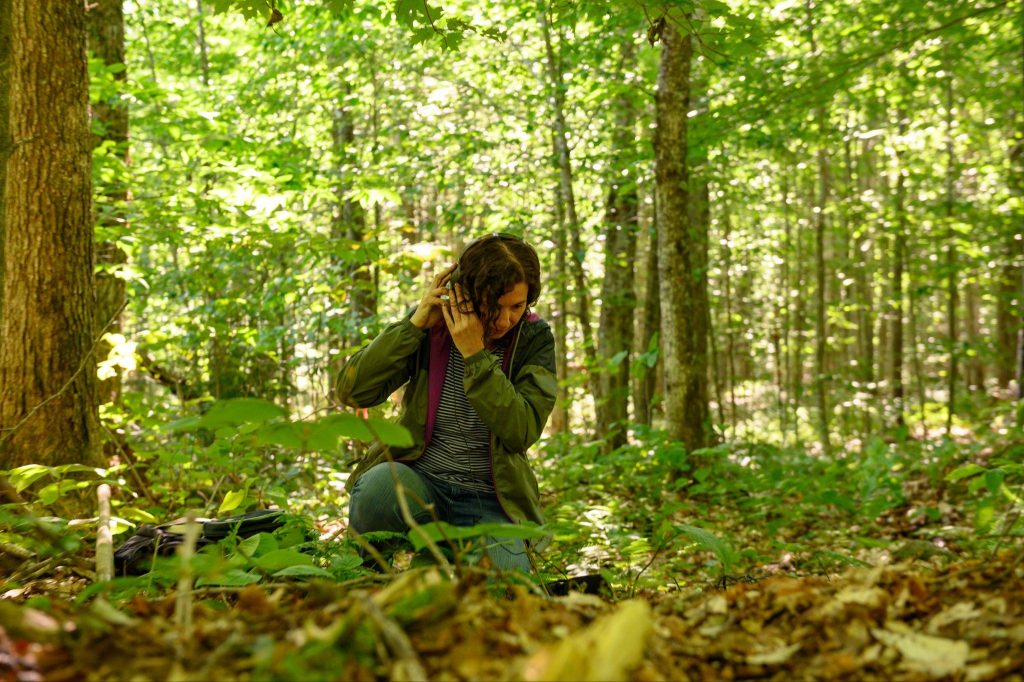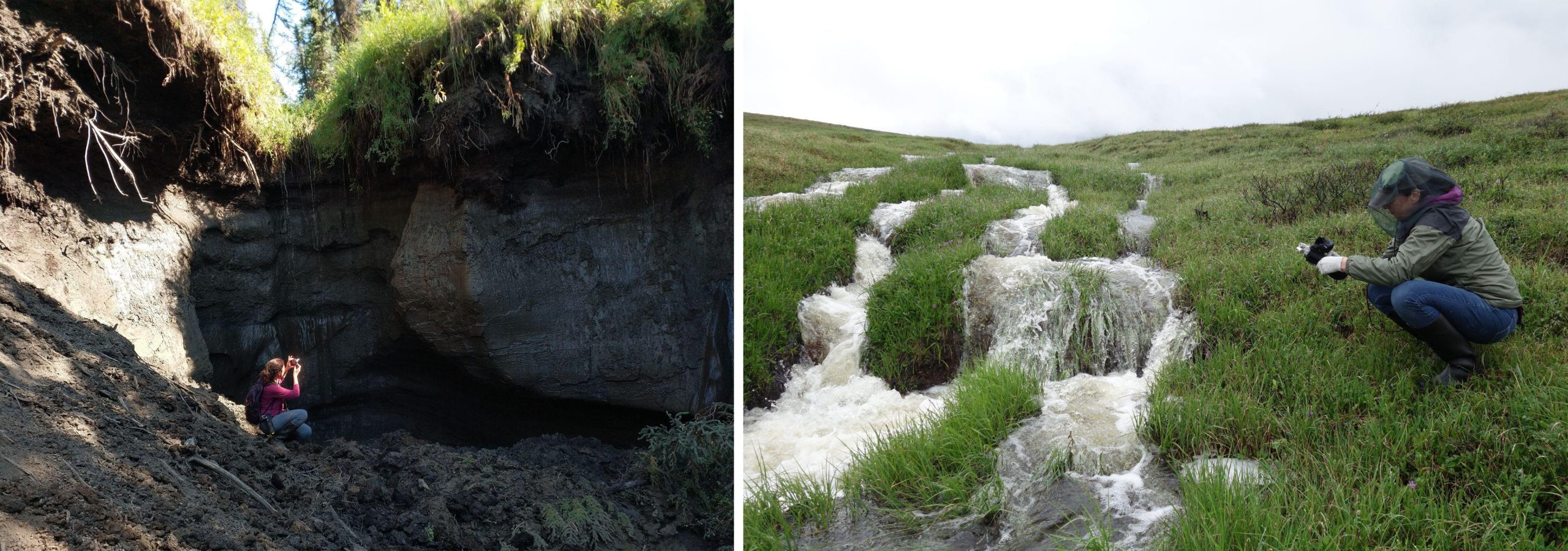5 The Underground Sound Project: An Acoustic Subterranean Journey
Nikki Lindt

The Underground Sound Project (www.theundergroundsoundproject.com) is a self-guided walking tour that can be experienced online or in any natural area with Wi-Fi.
The Project
The Underground Sound Project is a collection of subterranean acoustics recorded by artist Nikki Lindt. These recordings are taken in soils, in mud, inside trees, among plant roots, under shorelines, beneath rainfall, and much more. Underground, these sounds are interwoven like a tight tapestry connecting ecosystems and communities.
Using an array of repurposed microphones, Lindt spent several years exploring and learning how to tap into this sonic ecosystem. What she found was a dynamic world of sound right beneath our feet. These subterranean acoustics often display patterns and are frequently influenced by above-ground events like wind, precipitation, and movement.

Researchers are still uncovering the complex relationships between living and non-living entities underground, and the study of subterranean sound has yet to be fully explored. We do know that some trees, plants, and animals use vibration (sound) to their advantage. For example, trees grow roots in the direction of nutrients, but also toward the vibrations given off by moving water.
Underground acoustics tell us a lot about the soils beneath us, as well as about ourselves. Human-created sounds often affect this underground world in unexpected ways. In Lindt’s urban recordings, the sounds of the subway system can be heard thundering and vibrating inside trees, and even the sounds of our footsteps rumble within the soils as we stroll through the park.
Collaboration
During the Underground Sound Project, Lindt got the opportunity to collaborate with ecologists, social scientists, and land managers from NYC Parks, the USDA Forest Service, and the Nature of Cities. Their input added depth to the project. The team was able to help Lindt locate meaningful locations for recordings, share an understanding of the ecosystem she was engaging with, and reflect on the relationship of local residents and communities to their parks and natural areas. This collaborative way of working had an important influence on the Underground Sound Project. Likewise, many collaborators remarked that the collaboration with Lindt benefited them by opening their eyes and ears to new ways of perceiving natural areas within their own pursuits.
Nikki Lindt reflects on the project and her practice:
As an artist, I have found the process of collaboration to be deeply meaningful and beneficial to my work and to my progress as an artist, thinker, and person.
—Nikki Lindt
My background is in visual art, and it was a surprise even to me when I began to incorporate sound into my work. While collecting documentation for a visual project in the Arctic Circle in 2018, I heard the subterranean sounds of thawing permafrost. The sounds were meditative and calming but also relentless . . . they just kept going and going. The duality of such calming sounds paired with the terror of what they represented was deeply impactful.

The sounds I heard helped me to better understand sound’s transcendent power. Having a background in the visual arts, I was struck with sound’s possibilities of alluding to time. This was a meaningful tool when working with a subject like thawing permafrost. Permafrost thaws slowly, but over time this process has a tremendous impact on our planet. I was so taken by this underground world of sound that I decided to continue exploring these sonics in further projects in the forests of the northeastern United States.
Part of what excited me about subsurface listening was the deeper connection I was able to experience with trees and the broader ecosystem. I spent several years listening inside trees and plants, within the forest floor, under bodies of water, and so much more. After associating natural areas with loss for so long, learning something novel about the interior landscape of the ecosystem helped me feel closer to it. This gave me energy, hope, and a deeper empathy for my natural surroundings.
I also became keenly aware of the overbearing sounds humans create within this mysterious world enclosed in darkness. I had to wonder: How are our sounds affecting these ecosystems?
While working on the Underground Sound Project it became even more apparent to me that there is an interconnection and interdependence between all beings, and that there are systems we are a part of but know very little about.
I wanted to share this exploration with others by creating the Underground Sound Project. My hope is that by slowing down and taking the time to connect with our broader ecosystem, visitors will feel more empathy, which in turn can lead to acts or feelings of protection and stewardship.
View this video to learn more about Nikki Lindt’s work and creative process.

